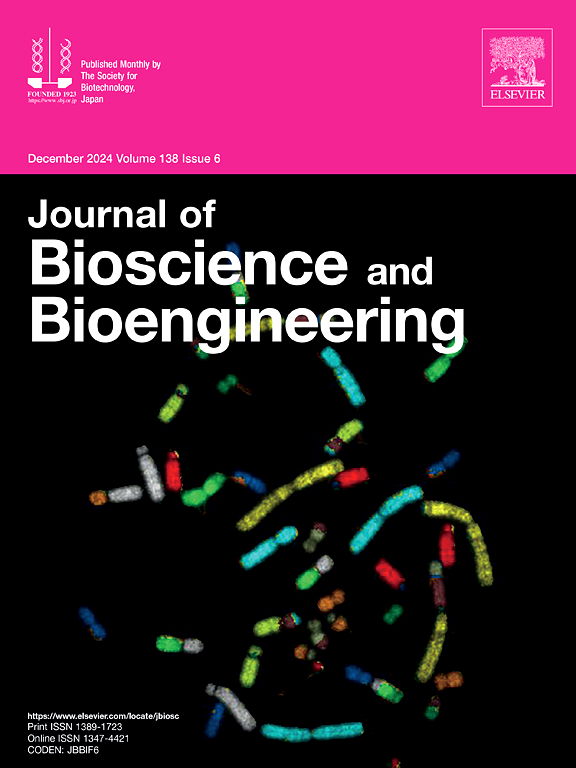Rapid and practical microbial detection method for brewery hygiene management using the EZ-Fluo system
IF 2.9
4区 生物学
Q3 BIOTECHNOLOGY & APPLIED MICROBIOLOGY
引用次数: 0
Abstract
The early detection of microorganisms in the brewery environment is crucial for taking quick corrective actions and minimizing the risk of microbial contamination. However, hygiene tests using traditional culture methods for visual detection have poor turnaround times. In this study, we optimized the test conditions for the EZ-Fluo Rapid Detection System for brewery hygiene management. In this system, microorganisms are trapped on a membrane filter, cultured on agar, and detected after brief incubation using fluorescence-based technology with a dedicated detector. Among several alternatives, the EZ-Fluo system was chosen for its cost-effectiveness. We determined the appropriate test conditions, including the incubation temperature, fluorescent reagent, and temperature for the fluorescence reaction, using two slow growing environmental indicator species, Acetobacter pasteurianus and Pseudomonas fluorescens. Using the EZ-Fluo system under our optimized detection conditions (hereafter referred to as the EZF-ODC method), nine indicator species common to breweries were detected at a recovery rate of 54.0–117.2 % after only 30 h of incubation. No significant difference was found in colony-forming units among the analysts (p > 0.05). In brewery hygiene tests, the EZF-ODC method (30-h incubation) and the traditional culture method (72-h incubation) yielded comparable detection profiles, with positive or negative results matching in 94.6 % of the 222 samples. The EZF-ODC method can provide results by the following day, representing a significant improvement over the 3 days needed for traditional methods and enabling the rapid implementation of hygiene control measures to maintain a clean brewery environment and possibly expedite production planning.
EZ-Fluo系统用于啤酒厂卫生管理的快速实用微生物检测方法。
啤酒厂环境中微生物的早期检测对于采取快速纠正措施和最大限度地减少微生物污染的风险至关重要。然而,使用传统培养方法进行视觉检测的卫生检测周转时间较短。在本研究中,我们优化了用于啤酒厂卫生管理的EZ-Fluo快速检测系统的测试条件。在该系统中,微生物被捕获在膜过滤器上,在琼脂上培养,并在使用专用检测器的荧光技术进行短暂孵育后进行检测。在几个备选方案中,EZ-Fluo系统因其成本效益而被选中。以巴氏醋酸杆菌和荧光假单胞菌两种生长缓慢的环境指示菌为实验对象,确定适宜的实验条件,包括培养温度、荧光试剂和荧光反应温度。在优化的检测条件下(以下简称EZF-ODC法),采用EZ-Fluo系统,仅需30 h,即可检测出9种啤酒常用指示剂,回收率为54.0 ~ 117.2%。分析者之间的菌落形成单位无显著差异(p < 0.05)。在啤酒厂卫生检测中,EZF-ODC法(孵育30小时)和传统培养法(孵育72小时)的检测结果相当,222份样品中有94.6%的阳性或阴性结果匹配。EZF-ODC方法可以在第二天提供结果,这比传统方法需要3天的时间有了显著的改进,并且可以快速实施卫生控制措施,以保持清洁的啤酒厂环境,并可能加快生产计划。
本文章由计算机程序翻译,如有差异,请以英文原文为准。
求助全文
约1分钟内获得全文
求助全文
来源期刊

Journal of bioscience and bioengineering
生物-生物工程与应用微生物
CiteScore
5.90
自引率
3.60%
发文量
144
审稿时长
51 days
期刊介绍:
The Journal of Bioscience and Bioengineering is a research journal publishing original full-length research papers, reviews, and Letters to the Editor. The Journal is devoted to the advancement and dissemination of knowledge concerning fermentation technology, biochemical engineering, food technology and microbiology.
 求助内容:
求助内容: 应助结果提醒方式:
应助结果提醒方式:


